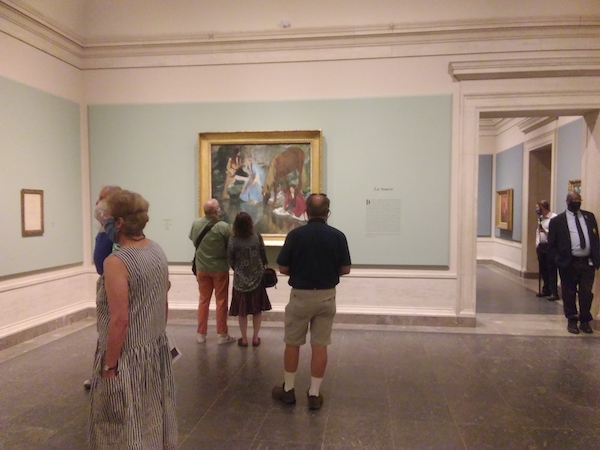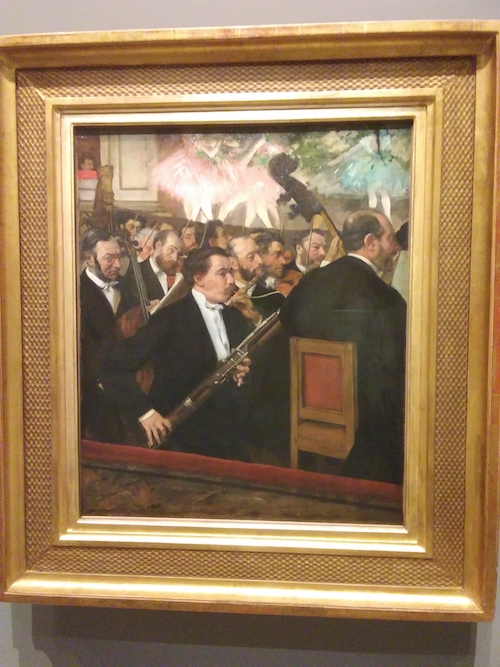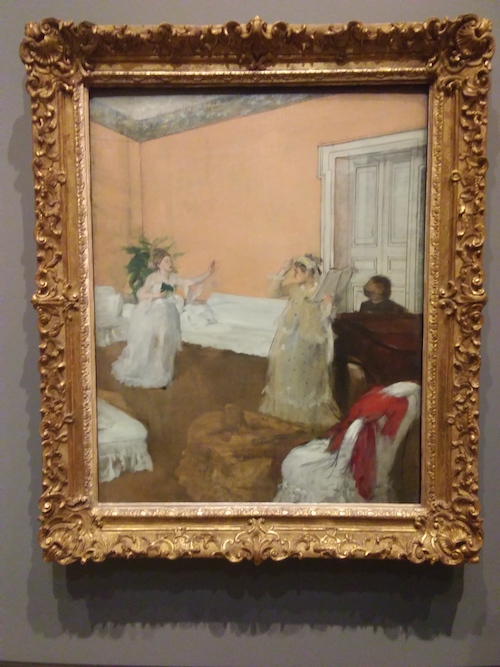With two welcome exhibit extensions, National Gallery of Art partially reopens

The cultural life of the District of Columbia is showing some signs of revival.
The National Gallery of Art unlocked its outdoor sculpture garden in June, albeit with reduced hours and limited occupancy. The museum took another important step last week, opening the doors of the West Building for the first time since the start of the coronavirus pandemic.
“Since our temporary closure in March, we’ve been preparing for the day when we could safely welcome visitors back into the Gallery,” said NGA director Kaywin Feldman in a press release. “After months of thoughtful planning, we’re delighted that that day has arrived. I look forward to once again fulfilling our mission as the nation’s art museum—a space for reflection, beauty, and public enjoyment.”
Only 500 visitors per day are allowed to visit the reopened galleries; the timed passes (by half-hours between 11 a.m. and 4 p.m.) allow stays of a maximum of 90 minutes. All people entering the museum are required to wear masks and are advised to maintain appropriate social distancing.
On Monday morning, as the queue formed for the first time slot, museum officials offered masks to visitors who did not have them.
The gallery spaces open to visitors are all on the western half of the West Building’s ground floor. They feature 19th- and 20th-century sculpture; medieval, Renaissance, and baroque sculpture and decorative arts; a selection of impressionist still life paintings; and the expansive installation Masterpieces of American Furniture from the Kaufman Collection, 1700–1830. Some smaller rooms are cordoned off to avoid potential overcrowding.

An unexpected bonus is that two exhibits from the spring, Degas at the Opéra and True to Nature: Open-Air Painting in Europe, have been extended past their original closing date. The latter exhibit provides relief to Washingtonians emerging from the long quarantine period in the form of airy outdoor vistas. The show builds on the museum’s collection of landscape sketches by European painters in the 18th and 19th centuries.
For the time being, the music and ballet scenes in the diverting Degas at the Opéra exhibit will have to suffice for classical music aficionados eager to get back into concert halls. Degas was introduced to the Paris Opéra by a childhood friend, Ludovic Halévy, shown in the painter’s Portrait of Friends, on the Stage, from 1879. The nephew of Fromental Halévy, composer of many operas including La Juive, Ludovic partnered with Henri Meilhac to pen opera libretti, including Bizet’s Carmen and a number of works by Offenbach.
Degas’s many paintings of young dancers in the Paris Opéra’s ballet school are widely known, and many of them are brought together in the exhibit. Less known is that Degas grew up in a musical family, who hosted a weekly salon featuring singers and musicians. Many of these family friends feature in the show’s paintings, including dancers Thérèse Malot and Eugénie Fiocre, pianist Blanche Camus, soprano Rose Caron, tenor Lorenzo Pagans, and bassoonist Désiré Dihau.
Scenes of musical performances fill the exhibit’s first few rooms, including depictions of ballet scenes at the Paris Opéra from La Source and from the opera Robert le Diable. The soprano Rose Caron, whom Degas called the “Divine Madame Caron” and depicted in a seated portrait, sang the role of Brunehild in Ernest Reyer’s Sigurd, a production the painter saw thirty-seven times. His painting The Orchestra of the Opéra, with the ensemble fancifully rearranged to show his bassoonist friend in the front row, shows composer Emmanuel Chabrier seated in a box over the stage.

Most poignant perhaps for classical music listeners is Degas’s The Song Rehearsal, a canvas from the Dumbarton Oaks collection. It likely shows a musical performance Degas heard on a trip to visit his cousins in New Orleans, during which he wrote that the lack of opera was “a veritable torture.” This sounds all too familiar to opera fans in Washington, where only a few determined classical music presenters have begun to offer brief concerts in outdoor venues.
Timed passes may be reserved at no cost through the National Gallery of Art website, available every Monday for the following week. Degas at the Opéra will be on view until October 12, and True to Nature: Open-Air Painting in Europe until November 29. A limited number of walk-in passes will be available on a first come, first served basis. The museum’s café and shops are also open.


